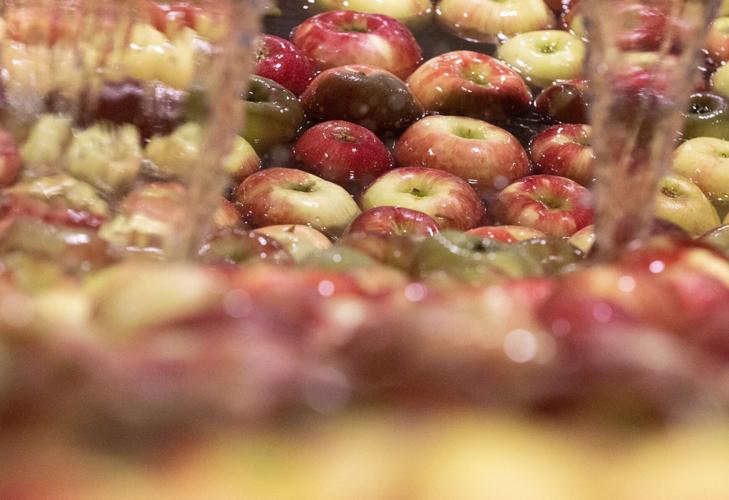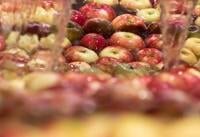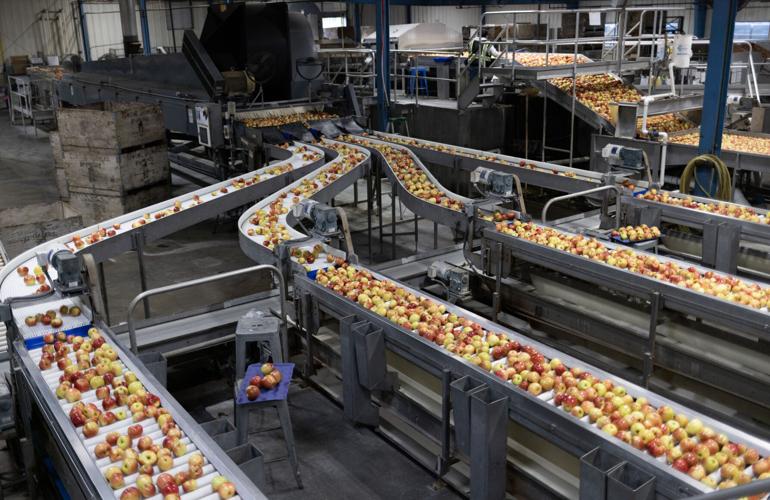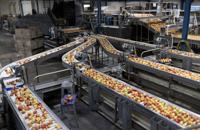As one of the most trade-dependent states in the U.S., Washington officials believe the Evergreen State – and particularly its agricultural economy – will be hit hard by the wide range of tariffs proposed by the Trump administration.
The 10% baseline tariff on all imported goods took effect Saturday, and country-specific reciprocal tariffs announced last week by President Donald Trump were set to began Wednesday before they were paused for 90 days. Several nations, including China, have responded with retaliatory tariffs against U.S. products.
“Exports are critically important to Washington’s agriculture economy,” said Rianne Ham, international marketing program manager at the Washington State Department of Agriculture.
“The uncertainty around retaliatory tariffs, the uncompetitive prices and lost market share that may result when implemented, and the damage to relationships with trading partners are some of the areas of concern for Washington agriculture exporters,” she added.
Ham’s comments were part of a news conference Tuesday hosted by U.S. Sen. Patty Murray. The Washington Democrat noted that Congress can reverse Trump’s tariffs, and the Senate voted to do so last week by ending the emergency criteria the president used to justify earlier trade regulations against Canada.
“That resolution passed the Senate – with four Republican votes – but right now, it’s dead in the water unless Speaker (Mike) Johnson brings it up for a vote in the House,” Murray said.
Trump’s April 2 executive order specifically mentions apples, saying they enter the U.S. duty-free from other countries, but Turkey tacks on 60.3% and India 50% on U.S. goods.
Consumer prices vs. growers’ profits
Potential retaliatory tariffs are the latest blow to Yakima Valley farmers who grow apples, cherries, hops, pears and other crops.
Jon DeVaney, president of the Washington State Tree Fruit Association, discussed prices and other economic challenges facing farmers in an interview with the Yakima Herald-Republic.
DeVaney said tariffs imposed by Canada, China, Mexico or other countries that import Washington crops are among the costs agriculture producers are expected to absorb to keep the price of their products competitive in foreign markets.
“(Customers) will often tell Washington producers, you are going to need to adjust your pricing so that the final delivered cost is competitive with what I might pay for a similar product from another source,” DeVaney said.
“When we see changes like higher fuel prices or tariffs, that can impact our pricing internationally and domestically,” he added.
Apple and cherry orchards have seen strong crops in recent years, DeVaney said, but competition from growers in Asia, Europe and South America, combined with added expenses for items like fertilizer and fuel, have kept many Washington state farmers from profiting from the large yields.
“It has been the large crop problem, but also competition with other products. There’s been increased production in year-round fruits and vegetables available in stores that we’re competing against directly,” DeVaney said. “This erodes our ability to ask for higher prices for the product.
“And of course profit is the difference between expense and returns. Those growers are also dealing with higher production costs that they can’t easily absorb or pass on,” he added.
So if grocery shoppers see high or rising prices in the produce section, they should not assume those higher prices translate into profits for farmers, DeVaney said. The tree fruit association noticed that President Trump specifically pointed out apples as a product with rising retail prices during his inaugural day luncheon.
“What we’re finding is the price for the grower and packer has been pretty much flat," DeVaney said. "There’s always a variation by variety and size and grade, but overall the pricing has been flat and last year declined quite a bit as retail prices were rising.
“When we talk to policy makers and deal with consumer frustration, we think it’s really important that everyone understands the challenge growers are facing,” DeVaney added. “Just because the retail price has gone up, that doesn’t mean the producer has seen an increase in their returns — in some cases it’s been the opposite.”
Retaliatory tariffs and apples
The additional costs of tariffs, both to consumers buying imported goods and to producers exporting products elsewhere, were the focus of Northwest public officials and agriculture industry leaders this week as China and U.S. officials threatened 104% tariffs against each other on Tuesday.
In 2024, Washington producers sold nearly $700 million in everything from beef, fruit, seafood, wheat and hay to China, which is the state’s No. 4 export market for agricultural goods, The Seattle Times reported.
“It’s just unprecedented what’s happening,” said Mark Anderson, CEO of Anderson Hay & Grain Co. in Ellensburg. He told The Seattle Times his company sells 70% of its crop overseas, including in China.
“The more you dive into the details, the scarier the consequences are, because they’re all unknown,” Anderson added.
What is known, as the WSDA’s Ham mentioned Tuesday, is what happened when China and India imposed tariffs on U.S. fruit during Trump’s first term in retaliation to our nation’s steel and aluminum tariffs.
India used to be Washington’s No. 2 export market, with $120 million in tree fruit exported there annually by 2018.
India imposed a 20% retaliatory tariff on U.S. apples in 2019. That was on top of the 50% existing tariff for apples. India has a 30% tariff on pears and cherries.
By the 2021-22 season, Washington growers exported just over $3 million of tree fruit to India.
In June 2023, India lifted its 20% retaliatory tariff on American-grown apples and pulse crops, such as lentils and chickpeas.
While exports to India have rebounded, they are down about 70% from where they were before the retaliatory tariff, Ham said Tuesday.
This is because foreign customers find new suppliers of apples, cherries and other ag products, and the supply chains change to accommodate these new sources of food, Ham said.
“Even if (tariffs) are only a temporary situation, getting the market share back is going to be very, very difficult,” she added.
“We’ve been through this before … and we do know that those retaliatory tariffs did raise prices on our agricultural products, they did make our products more expensive for consumers, and they did result in lost market share.”
Yakima County ranks No. 2 in the state for the value of agricultural products sold, and is 13th in the nation. Fruit was the top product produced, with $892 million in sales, according to the 2022 federal Census of Agriculture.
Statewide, approximately 30% of apples and 25% of cherries are exported each year. The top export markets for Washington apples are Mexico, Canada and Taiwan. The top cherry markets are Canada, South Korea and Taiwan, according to the state Department of Agriculture.











(0) comments
Comments are now closed on this article.
Comments can only be made on article within the first 3 days of publication.